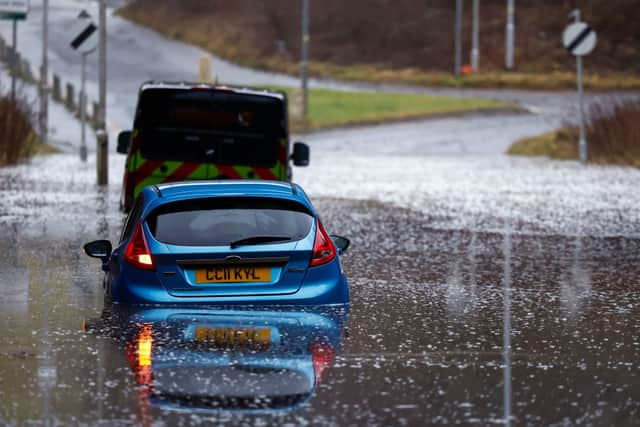Scotland: Number of homes and businesses vulnerable to flooding could rise 40% by 2080 - due to climate change
and live on Freeview channel 276
The Scottish government had to send out a record number of flood alerts last winter, with the changing climate set to bring more severe and frequent floods to the north.
The Scottish Environment Protection Agency (SEPA) has this week opened a new public consultation to review Scotland's Potentially Vulnerable Areas (PVAs) - places where there is a significant risk of flooding, either now or in the future. The agency says that it needs to protect communities from future impacts of flooding, with the number of homes, businesses and services at risk across Scotland projected to increase by around 40% by the 2080s, due to climate change.
Advertisement
Hide AdAdvertisement
Hide AdThere are already around 284,000 homes, businesses and services across Scotland currently identified as being at risk of flooding. Being designated as a PVA will allow local authorities to come up with a management plan to reduce the impact on residents - while helping prioritise flood protection work and investment in the places it is needed most.
This comes after SEPA issued a record number of regional flood alerts and local flood warnings last winter, sending a total of 720 messages between 1 September 2023, and 16 February 2024. Major flooding events included Storm Babet, which saw huge areas of farmland damaged and three lives lost in Scotland.


The agency's flood risk planning manager, Siobhan McNulty, said: "Scotland is witnessing an increasing number of extreme weather events and flooding presents a growing threat to our communities. It is vital we work together with partners and communities to identify the areas most at risk so we can work together to increase Scotland's resilience to flooding."
PVAs were the first step in this process, she continued. Since they were created in 2011 these vulnerable areas have been reviewed every six years, taking into consideration past, current and future flood risk from rivers, the sea and surface water - using past floods, observations and strategic flood modelling.
Advertisement
Hide AdAdvertisement
Hide AdThis year's review, however, will focus on smaller, community-based target areas. McNulty added: "Whether you have previously been affected by flooding or have concerns about potential future impacts for your home, business or community, we want to hear from you.
"Your views on the proposed PVAs will inform essential future flood risk management work so we can improve flooding resilience together and best prepare for a changing climate," she said.
The consultation will run from Monday (25 March) to 24 June. The new, proposed PVAs will then be sent to Scottish Government for ministerial approval, before the list is published in December. You can respond to the consultation on PVAs online here.
Climate change can worsen flooding in a number of ways. The world has just experienced its warmest year on record - and warmer air can hold more water, leading to more rainfall. Heavier rain can overwhelm drainage systems or burst river banks, the Met Office says, causing surface flooding. Warmer temperatures can also cause sea level rise by melting glaciers and sea ice at the poles, making flooding more likely in coastal communities.
Comment Guidelines
National World encourages reader discussion on our stories. User feedback, insights and back-and-forth exchanges add a rich layer of context to reporting. Please review our Community Guidelines before commenting.
